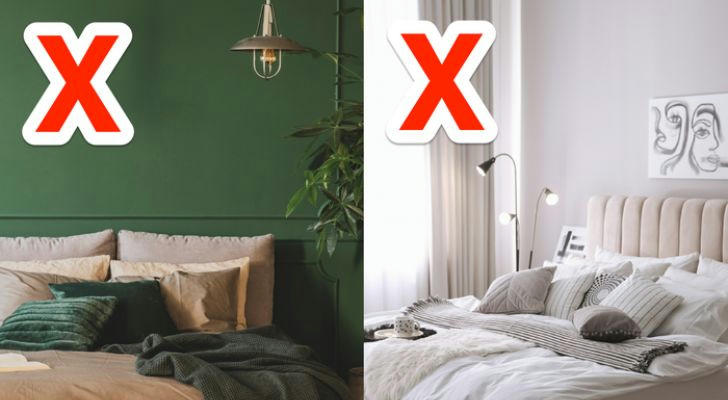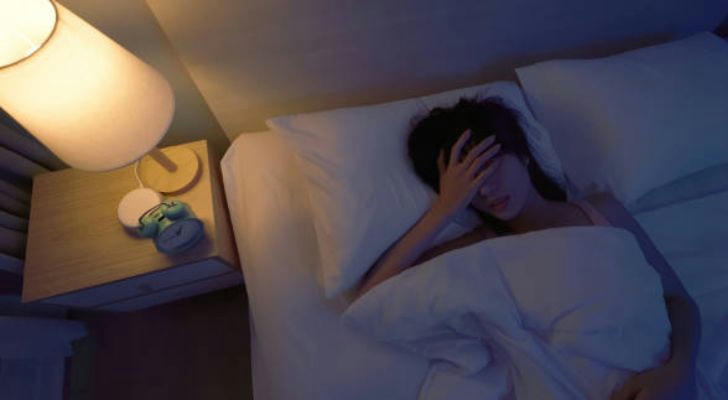8 Bedroom Decorating Mistakes You Should Never Make
Discover the most common bedroom decorating mistakes designers often see—and learn how to avoid them.
Your bedroom isn’t just where you sleep—it’s your retreat, your recharge station, and ideally, a space of calm. But even the most thoughtfully decorated rooms can fall victim to common design mistakes. According to top interior designers, avoiding these eight errors can drastically improve both the style and functionality of your bedroom.

1. Overmatching: Let Your Personality Show
While it may feel safe to buy a full set of coordinated furniture and bedding, an overly “matchy-matchy” look can make the room feel flat and uninspired.
“Mixing textures and patterns adds depth and personality,” says Elle Cole, founder of Elle Cole Interiors in Dallas, Texas. For example, instead of using all-white linens, try combining a cotton duvet with a chunky knit throw and velvet cushions.
Jewel Marlowe, founder of Jeweled Interiors, agrees: “There’s no need to buy a whole bedding set in a bag. Mix up pillows in different sizes and styles for a layered, custom look.”
Matching furniture sets also reduce the room’s character. “They often overcrowd the space and limit creativity,” explains Atlanta-based designer Divya Vaswani. A mix of individual, complementary pieces can make the room feel more curated and unique.
2. Overcrowding: Less Furniture, More Flow
No matter your room size, packing in too much furniture can ruin the ambiance. “Let the room breathe,” Cole advises. Instead of multiple dressers or armchairs, focus on a few well-placed items with clear purposes.
Interior designer Debbie Mathews suggests giving the bed visual prominence. “It should be the belle of the ball,” she says. A simplified layout allows your eyes to rest and creates a sense of calm.
Tip: Use a space-planning app to test arrangements before buying new pieces.
3. Too Much Color: Choose Restful Tones
While bold colors have their place, your bedroom should promote rest. “I’ve seen rooms with intense wallpapers or paint that feel more energizing than restful,” says Sara Swabb, founder of Storie Collective in D.C.
Instead of fire-engine red or electric blue, consider sage green, blush, or soft grey. A 2023 National Sleep Foundation survey showed that 67% of respondents slept better in bedrooms with soft color palettes.
That said, don’t shy away from all color. Use artwork, throw blankets, or cushions to introduce subtle accents without overwhelming the space.

4. Ignoring Scale and Proportion
Mismatched furniture proportions can throw off a room’s balance. A nightstand that's too short or tall compared to the bed is not just inconvenient—it looks awkward.
“Nightstand height should be within a couple of inches of your mattress top,” Swabb notes.
Rug size also matters. Whitney Durham of Atlanta-based Whitney Durham Interiors warns, “A rug that’s too small can shrink the room visually.” As a rule of thumb, an area rug should extend at least 18–24 inches beyond the bed frame on all sides.
5. Bare Bedding: Style and Comfort Matter
Your bed is the centerpiece—so dress it accordingly. “I always recommend at least two layers of sleeping pillows, one layer of decorative pillows, and a blanket or coverlet,” says Kevin O’Gara of Kevin Francis Design.
This isn’t just about looks. Studies show that a well-made bed improves sleep hygiene and daily productivity. Vaswani adds, “Wait for your favorite bedding brand to go on sale. Good sheets can be pricey but completely worth it.”
Try this combo: Percale sheets + linen duvet + quilted coverlet = layered luxury.
6. Poor Lighting: No More Harsh Overhead Lights
Many people rely solely on ceiling lights, which often create harsh shadows and strain the eyes. “Instead, focus on soft, layered illumination,” says Cole.
O’Gara recommends avoiding overhead lighting at night altogether. “Use table lamps, floor lamps, or sconces to create ambient zones.”
For bedtime readers, adjustable wall-mounted lights are a game-changer. “Swing-arm sconces let you read in any position comfortably,” adds Mathews.
Pro Tip: Use smart bulbs with dimming features to tailor your lighting from morning to bedtime.
7. No Ceiling Fan: A Missed Comfort Opportunity
Temperature plays a crucial role in quality sleep. A ceiling fan not only helps with airflow but also provides a soothing white noise.
“Good sleep is one of the best things we can do for our health,” says designer Liza Nicole Angelucci. “If a fan helps, go for it.”
Worried about appearance? Choose a low-profile fan in a color that matches the ceiling. Some brands even offer paintable blades for seamless integration.

8. Neglecting Window Treatments
Window treatments are more than decorative—they’re functional. Erin Paige Pitts, a designer based in Maryland and Florida, says, “Every bedroom should have blackout curtains or shades, especially for light-sensitive sleepers.”
Fact: According to the CDC, total darkness during sleep can improve melatonin production and help regulate circadian rhythms.
Layering sheer curtains with blackout panels allows flexibility. During the day, let in natural light; at night, block it out entirely.
Final Thoughts
A well-designed bedroom balances comfort, beauty, and purpose. By avoiding these eight common mistakes—and implementing expert-backed solutions—you’ll not only elevate your space but also support better sleep and well-being.
Remember: the goal isn’t perfection, but personalized harmony. Let your room reflect who you are while helping you feel truly at ease.
